#karuṇā
Explore tagged Tumblr posts
Text
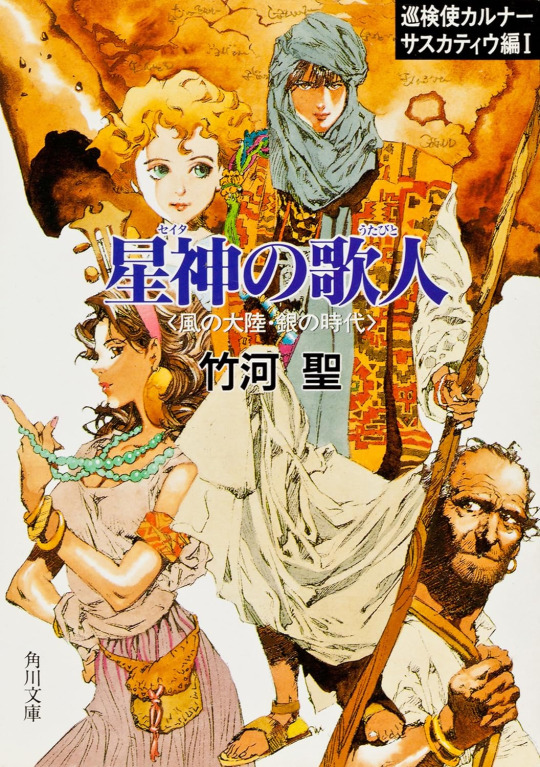
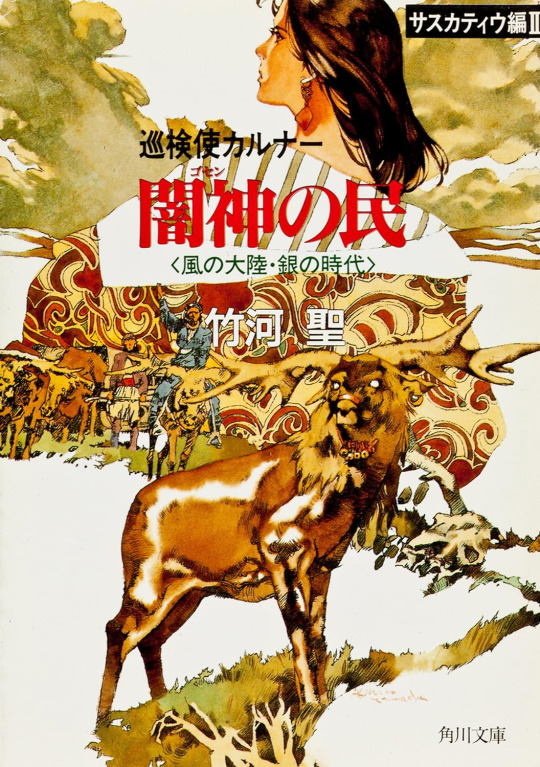
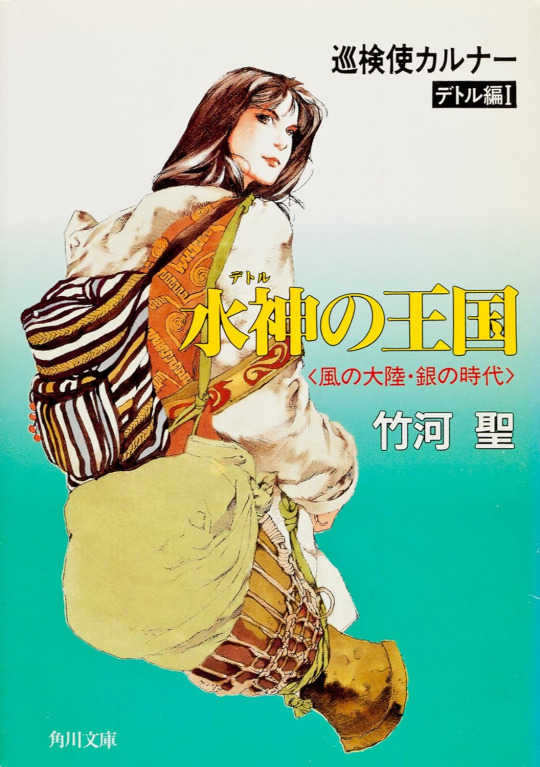
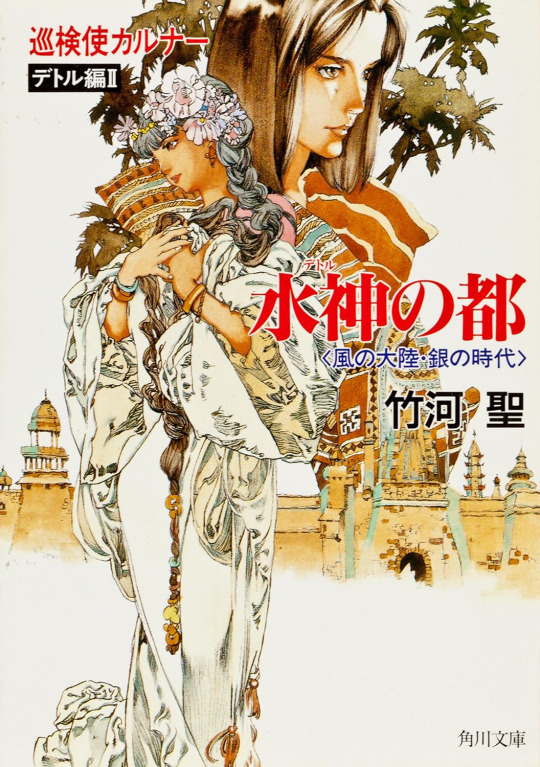
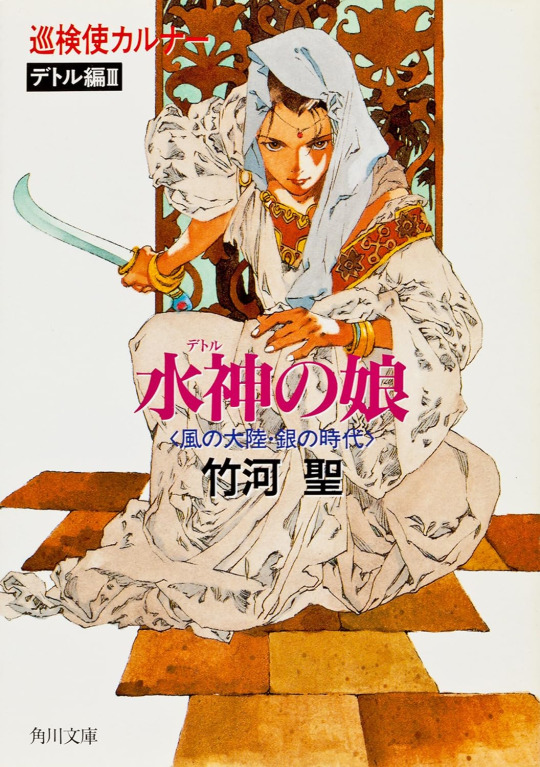
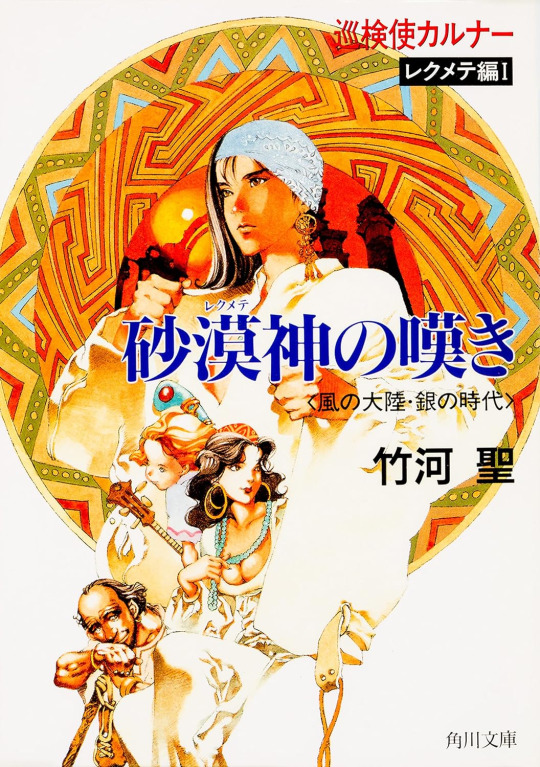
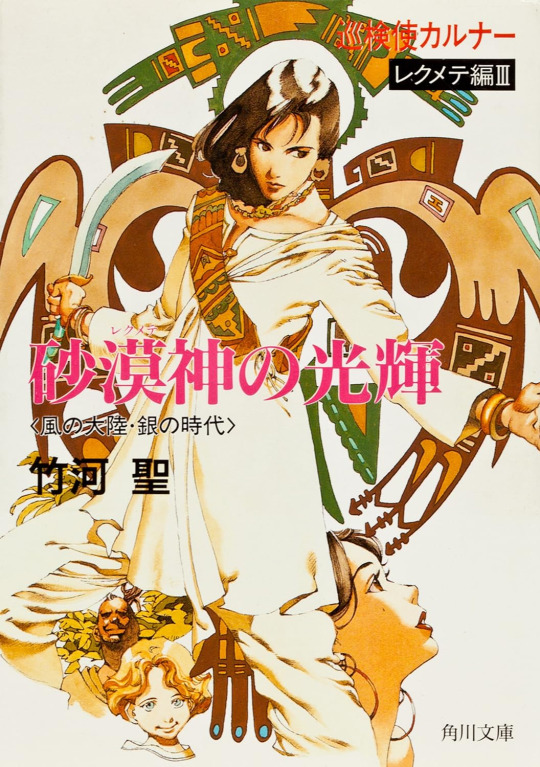
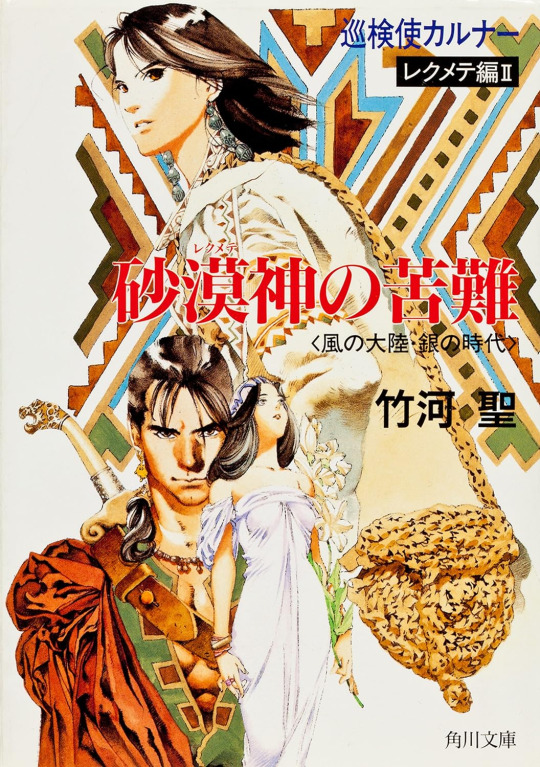
Junken-shi KARUNA[巡検使カルナー]: "Inspection-Tour Envoy Karuna"
(more casually you might localize this as something like "Travelling Inspector Karuna" or just "Inspector Karuna")
#manga covers#not manga#akihiro yamada#the shi[使] might actually refer to klesha#the buddhist concept#because the name Karuna[カルナー] might very well be#sanskrit Karuṇā[करुणा]
22 notes
·
View notes
Text


Tantra is the science of transforming ordinary lovers into soul mates. And that is the grandeur of Tantra. It can transform the whole earth; it can transform each couple into soul mates. -Rajneesh
Yab-Yum Talon Abraxas
Yab-Yum (Tibetan meaning "father-mother") is a common symbol in the Buddhist art of India, Bhutan, Nepal and Tibet representing the male deity in sexual union with his female consort. Often the male deity is sitting in lotus position while his consort is sitting in his lap.
The symbolism is associated with Anuttarayoga tantra and, while there are various interpretations of the symbolism in the twilight language, the male figure is usually linked to compassion (karuṇā) and skillful means (upāya-kauśalya), while the female partner to 'insight' (prajñā).
The symbolism of union and sexual polarity is a central teaching Tantric Buddhism, especially in Tibet. The union is realised by the practitioner as a mystical experience within one's own body.
Yab-yum is generally understood to represent the primordial (or mystical) union of wisdom and compassion. In Buddhism the masculine form is active, representing the compassion and skillful means (upaya) that have to be developed in order to reach enlightenment. The feminine form is passive and represents wisdom (prajna), which is also necessary to enlightenment. United, the figures symbolize the union necessary to overcome the veils of Maya, the false duality of object and subject.
Yab-yum may also be represented through the aniconic signification of yantra and mandala. In Tibetan Buddhism, the same ideas are to be found concerning the bell and the dorje, which, like the yab-yum, symbolize the dualism that must be exceeded. The sacred Tantric practice leads to rapid development of mind by using the experience of bliss, non-duality, andecstasy while in communion with one's consort.
119 notes
·
View notes
Text
Karuṇā
Characters: Sessyoin Kiara, Fujimaru Ritsuka (F)
Summary: An Extraverse-inspired Servant route for Kiara, set during the Epic of Remnant.
The close-knit community of Chaldea's Servants and staff struggle with loss and scarcity as the newly-restored Mage's Association, fearful of their independence, brings them forcefully back to heel. Ritsuka Fujimaru, formerly humanity's last master, is isolated and hopeless, her coping mechanisms breaking down as she's worn down by shouldering the strife in her community. Kiara Sessyoin, fresh from another humiliating defeat just at the cusp of fulfilling her dream, arrives in a reflective mood, determined not to repeat her mistakes a third time. She could solve all their problems at once. Or it could just be bait.
Tags: Character Study, Mystery, Suspense, Slow Burn, Minor Psychological Horror, Character Study, Enemies Turned Allies, Religion
Chapter 11
Excerpt:
The tension smothers her sentence, despite her efforts. Kiara continues to stare at her. She really is not smiling.
Ritsuka swallows.
Kiara’s center of gravity slowly begins to shift.
She takes a step to Ritsuka’s right, eye contact lingering. And then another.
And then another, eye contact breaking as she begins to circle around behind her.
“And what,” she begins, “exactly, is it that I ‘really want.’” She stops. She’s so close. Ritsuka’s breaths are trembling. Sessyoin Kiara is standing behind her. It’s like turning away from a tiger, intentionally, knowing that’s the signal to pounce. Knowing that you would stand no chance.
She leans in close, so close right where Ritsuka’s shoulder and neck meet, and Ritsuka can feel the warmth radiating from her skin. Her breath tickles against Ritsuka’s ear. Her knees might give out.
“Hmmm?” she hushes, right in her ear. “Fujimaru. Ritsuka.”
#This update is like 2-3 chapters btw. If you didn't catch it earlier. Make sure to read the header note on the latest chapter.#my fic#my writing#fgo#fate grand order#fate/extra ccc#fate extra ccc#fate series#kiara sessyoin#sessyoin kiara#ritsuka fujimaru#fujimaru ritsuka#yuri is real in 2025#highly suspect nuns
14 notes
·
View notes
Text
Parallel Wisdom Between The Bible And Buddhism
Religion and spirituality have long shaped human understanding of the world, our place in it, and the ultimate quest for meaning. Two of the most prominent spiritual traditions—Christianity and Buddhism—often appear to diverge in their beliefs, practices, and paths to salvation. Christianity, rooted in the teachings of Jesus Christ and the Bible, speaks of faith, divine grace, and the love of God. On the other hand, Buddhism, founded on the teachings of Siddhartha Gautama (the Buddha), emphasizes mindfulness, meditation, and the pursuit of enlightenment through inner transformation.
While these two traditions are often seen as fundamentally different, they also share profound spiritual insights that resonate across cultural and religious boundaries. In this blog, we will explore the parallel wisdom between the Bible and Buddhism, as discussed in the book I Am The Way—a work that delves into the universal truths and shared principles of both traditions. We'll look at the themes of love, compassion, the nature of suffering, spiritual growth, and the pursuit of inner peace.

1. The Common Ground of Love and Compassion
One of the most significant parallels between the Bible and Buddhism is their emphasis on love and compassion. In the Bible, love is the central message of Christ’s teachings. Jesus himself declared that love is the greatest commandment:
“Love the Lord your God with all your heart and with all your soul and with all your mind… Love your neighbor as yourself.” (Matthew 22:37-39)
This message of love, which extends not only to God but to all of humanity, reflects the heart of the Christian gospel. It speaks to the importance of loving one another, offering forgiveness, and extending grace even to enemies.
In Buddhism, the core value of compassion (karuṇā) mirrors this biblical emphasis. The Buddha taught that compassion is one of the essential qualities of a spiritually awakened person. In the Metta Sutta (the discourse on loving-kindness), the Buddha emphasizes the importance of universal loving-kindness, encouraging people to develop love for all beings without discrimination:
“May all beings be happy. May all beings be without illness. May all beings experience the calm of a peaceful heart.”
While the Bible frames love in the context of divine love and grace, Buddhism sees compassion as part of the path to enlightenment. In both traditions, love is more than a mere feeling; it is a practice that involves understanding, forgiveness, and selflessness.
2. Understanding and Overcoming Suffering
Another deep connection between Christianity and Buddhism lies in their teachings on suffering and the human condition. Both traditions acknowledge the pervasive nature of suffering in human life and offer a path toward liberation from it.
In Buddhism, the first of the Four Noble Truths states: “Life is suffering” (dukkha). The Buddha identified suffering as an inherent part of human existence—be it physical pain, emotional turmoil, or existential dissatisfaction. He taught that suffering arises from attachment, desire, and ignorance, and that the path to freedom (the Eightfold Path) involves letting go of these attachments and cultivating mindfulness and wisdom.
In the Bible, suffering is also recognized as a reality of the human condition, especially after the fall of man. In the book of Genesis, the entrance of sin into the world introduces suffering and death. However, Christianity offers a promise of redemption and eternal life through Jesus Christ. Christ himself experienced suffering on the cross, embodying God’s compassion for humanity's plight. Through his suffering, Christians believe they are offered hope, as Paul writes:
“For I consider that the sufferings of this present time are not worth comparing with the glory that is to be revealed to us.” (Romans 8:18)
While Buddhism views suffering as something to be transcended through personal enlightenment, Christianity sees suffering as part of the redemptive process that leads to eternal salvation. Both paths offer hope and healing—one through inner transformation and the other through divine grace.
3. The Path to Spiritual Awakening
The Bible and Buddhist teachings both emphasize the importance of a spiritual path, though they frame it in different ways. In the Bible, the path to salvation is through faith in Jesus Christ. Jesus declares himself the way, the truth, and the life:
“I am the way, the truth, and the life. No one comes to the Father except through me.” (John 14:6)
For Christians, this path involves faith, repentance, and following Christ’s example of love, service, and obedience to God’s will. It is not a path of self-reliance but of relying on God’s grace and the transformative power of the Holy Spirit.
In contrast, Buddhism teaches the Eightfold Path as the way to enlightenment and liberation from the cycle of birth and rebirth (samsara). The Eightfold Path consists of right understanding, right intention, right speech, right action, right livelihood, right effort, right mindfulness, and right concentration. This path is about cultivating ethical conduct, mental discipline, and wisdom. Rather than relying on external salvation, Buddhists focus on inner transformation and mindfulness as the means to spiritual awakening.
Despite the differences in their approaches, both traditions stress the importance of a clear and purposeful path toward spiritual growth. Whether it is through divine grace or personal effort, the journey toward a higher state of being is central in both the Bible and Buddhism.
4. Selflessness and Letting Go of Ego
The Bible and Buddhism also share a deep concern with the problem of ego and self-centeredness. In Christianity, pride and selfishness are seen as obstacles to spiritual growth. Jesus often taught his followers to deny themselves and serve others:
“Whoever wants to be my disciple must deny themselves and take up their cross daily and follow me.” (Luke 9:23)
In Buddhism, the concept of anatta (no-self) highlights the illusion of a permanent, independent self. The Buddha taught that clinging to the ego and a sense of self leads to suffering. Letting go of attachment to the self is central to Buddhist practice, as it leads to the realization of interdependence and compassion for all beings.
In both traditions, selflessness is key to spiritual transformation. For Christians, it involves humbling oneself before God and serving others. For Buddhists, it involves transcending the ego and cultivating compassion and wisdom. Both paths lead to a life of greater peace, love, and harmony.
5. The Importance of Mindfulness and Prayer
Mindfulness and prayer are also common threads in the Bible and Buddhism, though they are practiced differently. In Buddhism, mindfulness (sati) is the practice of being fully present in the moment, aware of one’s thoughts, emotions, and actions. It is a central component of meditation and is seen as a way to cultivate insight and reduce suffering.
In Christianity, prayer is a key practice for connecting with God, seeking guidance, and finding peace. The Bible encourages believers to pray continually, as Paul writes:
“Pray without ceasing.” (1 Thessalonians 5:17)
Both mindfulness and prayer offer ways to cultivate inner peace and spiritual awareness. While mindfulness focuses on self-awareness and insight, prayer is about communion with God and aligning oneself with God’s will. Despite these differences, both practices offer a means to cultivate inner stillness, peace, and spiritual growth.
6. Inner Peace and the Kingdom of God
Both the Bible and Buddhism offer a vision of inner peace that transcends the turmoil of the external world. In Buddhism, the ultimate goal is nirvana—a state of peace and liberation from the cycle of suffering. In the Bible, Jesus speaks of the Kingdom of God as a realm of peace and righteousness, both a present reality and a future hope:
“The kingdom of God is within you.” (Luke 17:21)
In both traditions, inner peace is not something to be found in external circumstances but in the transformation of the heart and mind. Whether through meditation, prayer, or faith, both paths offer a way to transcend the chaos of the world and find lasting peace.
Conclusion
The parallel wisdom between the Bible and Buddhism, as explored in I Am The Way, reveals profound truths that resonate across cultural and religious boundaries. Despite their differences in doctrine and practice, both traditions offer pathways to love, compassion, inner peace, and spiritual awakening. Christianity emphasizes divine grace and faith in Jesus Christ, while Buddhism focuses on inner transformation and mindfulness. Yet both traditions share the ultimate goal of transcending suffering, finding peace, and living in harmony with all beings.
By exploring these shared principles, we can deepen our understanding of both the Bible and Buddhism, and appreciate the universal spiritual truths that unite humanity in its quest for meaning and enlightenment.
0 notes
Link
🌟 Discover the transformative power of Karuṇā on your spiritual journey! 🌟 Karuṇā, rooted in Buddhism, represents deep empathy and compassion towards those in distress. Like a mother's unconditional love, it goes beyond mere sympathy, encouraging actions to alleviate suffering. 🌱 Why embrace Karuṇā? It not only enhances spiritual growth but also: - Strengthens relationships through deeper empathy - Facilitates conflict resolution by humanizing challenges - Builds resilience by recognizing suffering as universal and temporary 🧘♂️ Ready to integrate Karuṇā into your life? - Start with daily meditations focusing on empathy. - Practice Loving-Kindness Meditation to cultivate unconditional empathy. - Choose to respond mindfully rather than react impulsively in difficult situations. Embracing Karuṇā fosters inner peace and inspires positive change, enhancing both individual experiences and the collective energy. 💬 Share your experiences and join our community on this enlightening path to spirituality and compassion. Together, we can make a difference! #SpiritualJourney #Compassion #Mindfulness #Karuṇā #InnerPeace #PositiveChange
0 notes
Text
Bṛhad-bhāgavatāmṛta Part 1 Chapter 4 Texts 100-104 - December 27, 2023
Bṛhad-bhāgavatāmṛta Part 1 Chapter 4 Texts 100-104 athāpi sahajāvyāja- karuṇā-komalātmani avakra-bhāva-prakṛtāv ārya-dharma-pradarśake eka-patnī-vrata-dhare sadā vinaya-vṛddhayā lajjayāvanata-śrīmad- vadane ’dho-vilokane jagad-rañjana-śīlāḍhye ’yodhyā-pura-purandare mahā-rājādhirāje śrī- sītā-lakṣmaṇa-sevite bharata-jyāyasi preṣṭha- sugrīve vānareśvare vibhīṣaṇāśrite cāpa- pāṇau…
View On WordPress
0 notes
Text
Chapter Notes | kachigaaru; to be worthy
you can read the newest chapter here!
Let's start of with some translations!
oyakata-sama
a traditional way to say "Master". I refer to Kagaya in prose as "master", however the character directly address him as oyakata-sama. This choice was made to distinguish other characters that are called master - for example, someone may call Akihito "Master" due to him being master of estate and a hashira, whereas oyakata-sama is reserved for the leader of the corps. Oyakata is traditionally used as a title for a father figure or provider. It's also very commonly used nowadays for sumo coaches.
nembutsu
also known in Chinese as nianfo, nembutsu is essentially a repetitive meditation in Pure Land Buddhism, commonly of the name of Amida Butsu (also known as Amitabha).
南・無・阿・弥・陀・仏 | namu amida butsu
one of the most common nembutsu - it essentially translates to "Praise Amida Butsu" or "I am aware of Amida Butsu" or even "I bow to Amida Butsu"
kyoudai sakazuki
a practice in which two people will swear over cups of sake to be sword brothers. the two people are not related, but after the practice, regard each other the same as true born family members. kyoudai means sibling to indicate the relationship - there are versions of this ceremony for parent-child relationships too. nowadays this is very commonly associated as a yakuza tradition or initiation.
shimuryoushin
also known as the brahmavihara, it is the four immeasurable virtues practiced and cultivated in Buddhism; loving-kindness or benevolence (mettā), compassion (karuṇā), empathetic joy (muditā), equanimity (upekkhā)
tsume-eri
the style of high western collar often seen in gakuran style uniforms. its the style of the demon slayer uniform.
tattsuke-hakama
the type of hakama worn for the corps' uniform where the bottom hem is bound into the kyahan shin guards.
umanori
essentially is means "horse-riding". umanori-hakama are divided/split hakama with two pant legs designed for riding horses. undivided hakama are full skirts with no pant legs and are worn over kimono, which can't accomodate a "split" or "divide".
keikogi
a type of garb commonly used for juudo or other martial arts practitioners. also known as a dougi or keigi. if you've ever seen a juudo match, they are likely wearing a keikogi.
waraji
traditional straw-woven sandals. similar to zoori, but because they are completed straw, they are significantly more flexible.
furisode
a long, flowing style of sleeve seen on kimono. generally furisode sleeves are considered formal and are reserved for young unmarried women (but not always!)
Next, a quick summary of the currently serving Hashira as of the beginning of Summer 1908.
Yanagizawa Yoriha
Dragon Hashira, 38 years old. She is the eldest serving hashira and de facto "leader" due to being in a position of seniority over the others. Has tanned skin marred with battle scars and shaved blond hair bar her side-swept bangs which cover her left eye and facial scarring. Has a very tall, muscular build.
Rengoku Shinjurou
Flame Hashira, 36 years old. Akihito's sworn brother. The Master of the Chrysanthemum Estate and Head of the Rengoku Family. He has lost himself to alcoholism since the death of his beloved wife, Ruka, one year ago. Unruly blonde hair with ends dipped in red, and vibrant red-and-gold eyes.
Urokodaki Ritsunoko
Water Hashira, 35 years old. She is Urokodaki Sakonji's only child and lives with Sen Watanobu at the Forest Estate. Long blue-black hair kept in a high tail, and bright sky blue eyes. She always wears a white kitsune mask with blue and red paint. She is Giyuu's master.
Sen Watanobu
Ice Hashira, 29 years old. He was once the tsuguko of Urokodaki Shouhaku, who was Sakonji's elder brother. After Shouhaku's death, he was too young to inherit his title, so continued training under Ritsunoko until promotion. Lives with her at the Forest Estate. Wavy navy hair kept in a low tail, and sad blue eyes.
Kakutani Akihito
Wind Hashira, 35 years old. Shinjurou's sworn brother. Master of the Spring Estate and Head of the Kakutani Family. Long, straight black hair with green eyes, the picture of nobility. Although he is older than Watanobu, he was promoted after the boy, making Watanobu his senior in rank - despite this he commonly sits with Yoriha and Shinjurou out of respect for his seniority in age and circumstance.
Himejima Gyoumei
Stone Hashira, 20 years old. A former monk turned demon slayer. He lives with Yanagizawa Yoriha at the Steel Estate. You should know this guy :')
Kakutani Yoake
Crane Hashira, 15 years old. Heir to the Spring Estate and daughter of the last Wind Hashira, Kakutani Atsuhito. Very long black hair kept in a low dolphin tail, gold eyes. She is the youngest currently serving hashira and the only practitioner of her esoteric breathing art.
Uzui Tengen
Sound Hashira, 16 years old. A former shinobi turned demon slayer. You should also know this guy :')
And that's all for now!
0 notes
Text

Insight and compassion always go together. Anyone who has insight and compassion also has happiness and no longer suffers. Compassion and insight are not two separate entities. They have a very close relationship. Insight comes from compassion, and compassion comes from insight: without one there cannot be the other. In Buddhism, when we speak of love we always speak of the Four Immeasurable Minds (Four Brahmavihāras), namely loving kindness (maitrī), compassion (karuṇā), joy (muditā), and inclusiveness (upekṣā). These four minds are limitless. That is why they are called immeasurable, which means a mind without boundaries or borders. Love in Buddhism is the kind of love that does not have boundaries. All of the different Buddhist traditions teach the Four Immeasurable Minds and all traditions recognize that love has no limit and is boundless. If it is limited then it is not the true love of a Buddha.
~Thich Nhat Hanh
20 notes
·
View notes
Text

Guanyin has long been my grandmother's favorite divine being. Grandma has always had a mini shrine dedicated to her on a shelf in her home. She was the one who first taught me about her in my youth.
While growing up in China, Guanyin to me was the personification of the most beautiful, the most pure, and the most gentle. I've admired many artworks of her, in her flowing white robes, with her long black hair, soulful dark eyes, and enigmatic expression, sitting or standing on her lotus seat, surrounded by her dragon companion, her young disciples, her faithful pet birds and fish, over the sea that's her home.
Guanyin is a Buddhist bodhisattva associated with mercy, kindness, compassion, and grace. She is the East Asian feminine representation of Avalokiteśvara, the principal attendant of Amitābha Buddha on the right, with 108 avatars, one notable one being Padmapāṇi (lotus bearer). Guanyin also appears in other Eastern religions as a goddess, including Chinese folk religion. She is the divine embodiment of goodness and forgiveness. The Chinese pray to her for health, fruitfulness, prosperity, and peace. She rules the seas, tames the sea monsters, controls the waves, and makes the deep waters safe crossing for fishermen and sailors. She is an eternal faithful student of Amitābha Buddha's, a teacher of his teachings, who denounces all evildoings.
Although she is most often portrayed as wearing all white, there are artworks depicting her dressed in shades of light pink, green, and blue.
Misconceptions about Guanyin in Western spiritual circles:
Guanyin is not a goddess in the same sense as the Western concept of a female deity. She is not the same as Aphrodite or Freyja, for example. According to Buddhist traditions, she is a bodhisattva (pusa in Chinese) and was once human. In Mahayana Buddhism, a bodhisattva is one who has reached immortality and divinity with bodhicitta, a sacred wish and compassionate mind to attain Buddhahood for the benefit of all sentient beings. This concept refers to a sentient being (sattva), originally mortal, who achieves enlightenment (bodhi), thus possessing the boddhisattva's divine psyche. It describes those who faithfully and diligently work to develop and exemplify loving-kindness (metta), compassion (karuṇā), empathetic joy (mudita), and equanimity (upekkha), the four divine virtues that are the "immeasurables" (brahmavihara).
She does not fit the Wiccan maiden/mother/crone triple goddess archetype at all. She is an unwed virgin. Chinese Buddhists believe in the celibacies of Buddhist divine beings. Even though she is associated with maternal qualities and motherliness, and women who wish to become mothers would pray to the "child bringer/baby sender" aspect and epithet of hers, she is not a mother herself. And she will never be a "crone".
Do not "summon" her for rituals or spell work. She is not one to be "summoned" for anything. It is incredibly disrespectful to try to do so.
She is not part of a closed practice. Buddhism is an open religion. You can worship her if you are not Buddhist or Chinese. But please do your research, and be respectful.
She is not a Pagan deity. The religions that worship her are also not Pagan religions. Please do not put her together with Paganism.
She is also not the Buddhist version of the Virgin Mary.
#guanyin#chinese mythology#buddhism#chinese deities#buddhist deities#ancient china#chinese folk religion#eastern religions#asian deities#witches of color
412 notes
·
View notes
Text
Freedom Reconceived: Ontologies of Liberation Across Civilizations - Part 2
As we transition into the second half of our inquiry into freedom, it becomes necessary to pause and reassess the arc of our trajectory. Photo by Benjamin Lehman on Pexels.com The previous sections dismantled the illusion of freedom as a self-evident or univocal category. We traced the etymological instability and conceptual slippage of the term, the multiplicity of typologies—negative,…

View On WordPress
#African philosophy#agency#anattā#Buddhism#Buddhist ethics#climate ethics#consciousness#cosmology#critical theory#decolonial thought#devekut#embodied philosophy#epistemology#Ethics#eudaimonia#existential freedom#fanāʾ#feminist philosophy#freedom#Hindu philosophy#Indigenous worldviews#interbeing#interdependence#intersectionality#Islamic philosophy#Jewish mysticism#karuṇā#liberation#liberation theology#metaphysics
0 notes
Text
Day 85 Meditation and Reflection
Become a Patron of Homoerotic Tantra℠:Mascul-IN-Touch℠ on Patreon! Click here: Become a Patron! An Official Site of Homoerotic Tantra:Mascul-IN-Touch℠ This is your Day 85 text for meditation/reflection: Oṃ. May I be a clear and unobstructed channel of Universal Love. This ” universal love” is compassion or karuṇā (करुणा. Karuṇā (करुणा, “kindness”) refers to the attitude conveyed by such terms…

View On WordPress
2 notes
·
View notes
Text



"Tantra is the science of transforming ordinary lovers into soul mates. And that is the grandeur of Tantra. It can transform the whole earth; it can transform each couple into soul mates." -Osho Yab-Yum "father-mother" Talon Abraxas Yab-Yum (Tibetan meaning "father-mother") is a common symbol in the Buddhist art of India, Bhutan, Nepal and Tibet representing the male deity in sexual union with his female consort. Often the male deity is sitting in lotus position while his consort is sitting in his lap. The symbolism is associated with Anuttarayoga tantra and, while there are various interpretations of the symbolism in the twilight language, the male figure is usually linked to compassion (karuṇā) and skillful means (upāya-kauśalya), while the female partner to 'insight' (prajñā). The symbolism of union and sexual polarity is a central teaching Tantric Buddhism, especially in Tibet. The union is realised by the practitioner as a mystical experience within one's own body. Yab-yum is generally understood to represent the primordial (or mystical) union of wisdom and compassion. In Buddhism the masculine form is active, representing the compassion and skillful means (upaya) that have to be developed in order to reach enlightenment. The feminine form is passive and represents wisdom (prajna), which is also necessary to enlightenment. United, the figures symbolize the union necessary to overcome the veils of Maya, the false duality of object and subject. Yab-yum may also be represented through the aniconic signification of yantra and mandala. In Tibetan Buddhism, the same ideas are to be found concerning the bell and the dorje, which, like the yab-yum, symbolize the dualism that must be exceeded. The sacred Tantric practice leads to rapid development of mind by using the experience of bliss, non-duality, and ecstasy while in communion with one's consort.
16 notes
·
View notes
Text
Karuṇā
Characters: Sessyoin Kiara, Fujimaru Ritsuka (F)
Rating: Mature
Summary: A tight-knit but wounded community struggles with loss and scarcity in the wake of Goetia’s defeat. The former Last Master of Humanity, deprived of a partner, a mentor, and the promised end to her long struggle, is isolated and hopeless. Meanwhile, the while the Mages’ Association and UN close in.
A humble nun in search of enlightenment answers the call in this time of need, and things begin to change.
An Extraverse-inspired Servant route for Kiara, set during the Epic of Remnant.
Tags: Suspense, Minor Psychological Horror, Character Study, Living Through Loss, Enemies Turned Allies, Slow Burn, Religion
Other Characters: Mash Kyrielight, Da Vinci, EMIYA, Ushiwakamaru, BB, Tamamo-no-Mae, Scheherazade, Shuten-douji & Ibaraki-douji, Jeanne Alter, Moriarty, Ishtar, Edmond Dantés, Hans Christian Andersen
Excerpt:
Ushiwakamaru smiles like a prince, un-self-conscious, without artifice. “Lady, I am confident that you will find what you need here, and grow to become the person you wish to be.” Her expression softens to something almost dreamy. “Chaldea is a place where such things happen.”
It is embarrassingly clear that she thinks of Chaldea’s Master as she says this. This girl has already found an outlet for her desires, a Lord to imitate her brother, to fill that hole in heart. Or perhaps… perhaps.
Unbidden, unwanted, it calls to the surface a memory of another girl bathed in light, shining and dancing through seafoam and smiling proud, full, even as her face crumbles like porcelain, crumbles like Kiara’s dream, so far out of reach.
And beyond, so much further afield, the reflected light of a moment.
Falling sakura petals. A cold heaviness. And one final bittersweet tale of a dreaming heart.
“Yes. I am sure you’re right.”
#my writing#my fic#sessyoin kiara#kiara sessyoin#fate/extra ccc#fate grand order#fgo#fate series#highly suspect nuns#ritsuka fujimaru#lesbian#sapphic#archer emiya#tamamo no mae#bb fate#ushiwakamaru#posting
35 notes
·
View notes
Photo


I had the opportunity to attend an online meditation retreat with the Venerable Bhikkhu Bodhi and others from Buddhist Global Relief this weekend. It focused on the Brahma Viharas, which translates to The Divine Abodes, and are sometimes called ‘The Four Sublime States.’ They have also been called ‘The only emotions worth having.’
Mettā, or loving-kindness. This is a deep, gentle, heartfelt concern for the wellbeing of others and is the basis of the Brahma Viharas.
Karuṇā, or Compassion is what happens when Loving-Kindness encounters Suffering. It is the sincere wish that others’ suffering is relieved and empathizing with their pain to the point where you feel it as well.
Muditā, or Sympathetic Joy, or Altruistic Joy is what happens when Loving-Kindness encounters wholesome Happiness or Joy. It is the celebration of others’ wholesome happiness and joy, sharing in their happiness and being happy that they’re happy.
Upekkhā, or Equanimity is what balances the others. It sees the larger picture and the sameness and equality and unity of all living beings.
The four work with each other and connect to each other. If you only practice one, you will become unbalanced. If you only practice loving-kindness you can become attached to the people you direct it to. If you only practice compassion you can be overwhelmed by the suffering and the compassion can turn to pity. If you only practice sympathetic joy you can lose sight of the suffering of others and become hypocritical. If you only practice equanimity you can become indifferent to the others because everything’s the same and eventually going to end, so they become unimportant.
The real benefit to meditating on these feelings and practicing them often is that you can change your character. What you think becomes what you say and what you say becomes what you do. So, the more you think about things from these points of view and feel these emotions, the more they will saturate into your everyday life until they become your instinctual reactions. When you encounter a situation that you would normally feel anger you will feel love, compassion, and equanimity with the other person and be able to calmly and wisely approach the situation.
Overall, the retreat was a really good experience and I enjoyed it greatly while learning a lot. It gave me a lot to add to my daily meditation practice and I can’t wait to continue exploring these concepts.
You can watch the entire retreat on YouTube, here: https://youtube.com/playlist?list=PLt_a6UaknGoqf4WV-y12PbmD5COzQwxKR
#buddhism#theravada#brahma viharas#meditation#retreat#buddhist global relief#divine abodes#four sublime states#metta#loving-kindness#karuna#compassion#mudita#sympathetic joy#altruistic joy#victorious joy#upekkha#equanimity
36 notes
·
View notes
Video
youtube
2021-07-26c Kensington Gardens: Michael James discusses
Śrī Aruṇācala Navamaṇimālai - The Necklace of Nine Gems for Arunachala, Verse 3
🕉️
This video begins with Sadhu Om singing verse 3 of ஸ்ரீ அருணாசல நவமணிமாலை ( Śrī Aruṇācala Navamaṇimālai), ‘The Necklace of Nine Gems for Arunachala’, and then Michael James explains and discusses the meaning and implications of it:
அருணா சலத்திலுறு கருணா கரப்பரம னருணார விந்த பதமே பொருணாடு சுற்றமொடு வருணாதி பற்றியுள மருணாட லற்று நிதமுந் தெருணா டுளத்தினின லருணாடி நிற்குமவ ரிருணாச முற்று புவிமேற் றருணா ருணக்கதிரி னருணாளு முற்றுசுக வருணால யத்தி லிழிவார்.
aruṇā calattiluṟu karuṇā karapparama ṉaruṇāra vinda padamē poruṇāḍu suṯṟamoḍu varuṇādi paṯṟiyuḷa maruṇāḍa laṯṟu nitamun teruṇā ḍuḷattiṉiṉa laruṇāḍi niṯkumava riruṇāca muṯṟu bhuvimēṯ ṟaruṇā ruṇakkadiri ṉaruṇāḷu muṯṟucuka varuṇāla yatti liṙivār.
பதச்சேதம்: அருணாசலத்தில் உறு கருணா ஆகர பரமன் அருண அரவிந்த பதமே, பொருள் நாடு சுற்றம் ஒடு வருண ஆதி பற்றி உளம் மருள் நாடல் அற்று நிதமும் தெருள் நாடு உளத்தினில், நல் அருள் நாடி நிற்கும் அவர் இருள் நாசம் உற்று புவி மேல், தருண அருண கதிரின் அருள் நாளும் உற்று சுக வருண ஆலயத்தில் இழிவார்.
Padacchēdam (word-separation): aruṇācalattil uṟu karuṇā ākara paramaṉ aruṇa aravinda padamē, poruḷ nāḍu suṯṟam oḍu varuṇa ādi paṯṟi uḷam maruḷ nāḍal aṯṟu nitamum teruḷ nāḍu uḷattiṉil, nal aruḷ nāḍi niṯkum avar iruḷ nāśam uṯṟu bhuvi mēl, taruṇa aruṇa kadiriṉ aruḷ nāḷum uṯṟu sukha varuṇa ālayattil iṙivār.
அன்வயம்: பொருள் நாடு சுற்றம் ஒடு வருண ஆதி பற்றி உளம் மருள் நாடல் அற்று நிதமும் தெருள் நாடு உளத்தினில், அருணாசலத்தில் உறு கருணா ஆகர பரமன் அருண அரவிந்த பதமே நல் அருள் நாடி நிற்கும் அவர் புவி மேல் இருள் நாசம் உற்று, தருண அருண கதிரின் அருள் நாளும் உற்று சுக வருண ஆலயத்தில் இழிவார்.
Anvayam (words rearranged in natural prose order): poruḷ nāḍu suṯṟam oḍu varuṇa ādi paṯṟi uḷam maruḷ nāḍal aṯṟu nitamum teruḷ nāḍu uḷattiṉil, aruṇācalattil uṟu karuṇā ākara paramaṉ aruṇa aravinda padamē nal aruḷ nāḍi niṯkum avar bhuvi mēl iruḷ nāśam uṯṟu, taruṇa aruṇa kadiriṉ aruḷ nāḷum uṯṟu sukha varuṇa ālayattil iṙivār.
English translation:
With a heart that always seeks clarity, being bereft of desiring and of the mental delusion of being attached to wealth, country, relatives, caste and so on, those who are steadfast in seeking sublime grace, the red lotus feet of the supreme Lord, the abode of grace, who dwells in Aruṇācalam, will subside in the ocean of bliss, achieving destruction of ignorance on earth, and always experiencing grace, like the rays of the rising sun.
Explanatory paraphrase:
With a heart that always seeks the clarity [of pure awareness], being bereft of desiring [anything else] and of the mental delusion of being attached to wealth, country, relatives, caste and so on, those [mature souls] who are steadfast in seeking the sublime grace of the red lotus feet of the supreme Lord, the abode [source, storehouse, abundance or bestower] of grace, who dwells in Aruṇācalam, will subside [and drown] in the ocean of bliss, achieving destruction of the darkness [of self-ignorance] [while living] on earth, and [thereby] always experiencing grace, [which shines brightly dispelling all darkness] like the rays of the rising sun.
✨
While discussing the meaning, significance and implication of this verse Michael also refers to and discusses another passage from Bhagavan’s writings, namely:
Śrī Aruṇācala Akṣaramaṇamālai: Verse 44: https://happinessofbeing.blogspot.com/2019/12/self-investigation-is-only-means-by.html#aamm44
An MP3 audio copy of this video can be listened to or downloaded from Sri Ramana Teachings podcast (https://ramanahou.podbean.com ): https://ramanahou.podbean.com/e/sri-arunachala-navamanimalai-verse-3


#Bhagavan Sri Ramana Maharshi#Michael James#Sri Arunachala Stuti Panchakam#Arunachala Navamanimalai#The Necklace of Nine Gems for Arunachala#AN v.3#Arunachala#desirelessness#detachment#surrender#renunciation#solitude#devotion#bhakti#association with the Self#sadguru
7 notes
·
View notes
Photo

Cultivating Healthy Mental States: Loving-kindness, Compassion, Sympathetic Joy, and Equanimity
.
As you learn and implement The Teachings of Gotama Buddha, you will need to cultivate the healthy mental states of loving-kindness, compassion, sympathetic joy, and equanimity to attain Enlightenment.
.
These four (4) mental states are often referred to as “The Brahma-viharas”.
.
The Four (4) Brahma-viharas are:
.
1.) Loving-kindness (Pāli: mettā) is active goodwill towards all beings without judgment. A genuine interest in seeing all beings be well.
.
2.) Compassion (Pāli: karuṇā) is concern for the misfortunes of others.
.
3.) Sympathetic joy (Pāli: muditā) is the feeling of joy for others success, even if you did not contribute to it.
.
4.) Equanimity (Pāli: upekkhā) mental calmness, composure, and evenness of temper, especially in a difficult situation, treating everyone impartially.
.
These mental states can be cultivated through meditation and in your daily life. Your intentions, speech, and actions should emanate from these mental states.
.
Loving-kindness is the remedy for anger, hatred, ill will, hostility, aggression, and other harsh intentions, speech, and actions. Loving-kindness also helps eliminate judgment of others looking down on them with arrogance or conceit.
.
Compassion is the remedy for lack of care and indifference.
.
Sympathetic joy is the remedy for envy, jealousy, and pride.
.
Equanimity is the remedy for an overactive mind that has restlessness and worry. Equanimity will also assist a Practitioner to eliminate measuring and comparing beings treating all beings equally. As you experience life, it is important to practice equanimity in all situations. Mental calmness, composure, and evenness of temper while treating everyone impartially without judgment, are mental states that will help you trust all beings.
.
One way of cultivating these mental states is through generous deeds, practicing generosity. Through the practice of giving and helping others, you do so with a mind of loving-kindness, compassion, sympathetic joy, and equanimity.
.
No one can give you a magic potion or secret spell that will cultivate these qualities for the mind.
.
Cont.👇 https://www.instagram.com/p/COD9RPJpX6EOUSOfFHuUzhbz5DyjjuwiIB3gkI0/?igshid=8sif329d0nqd
6 notes
·
View notes